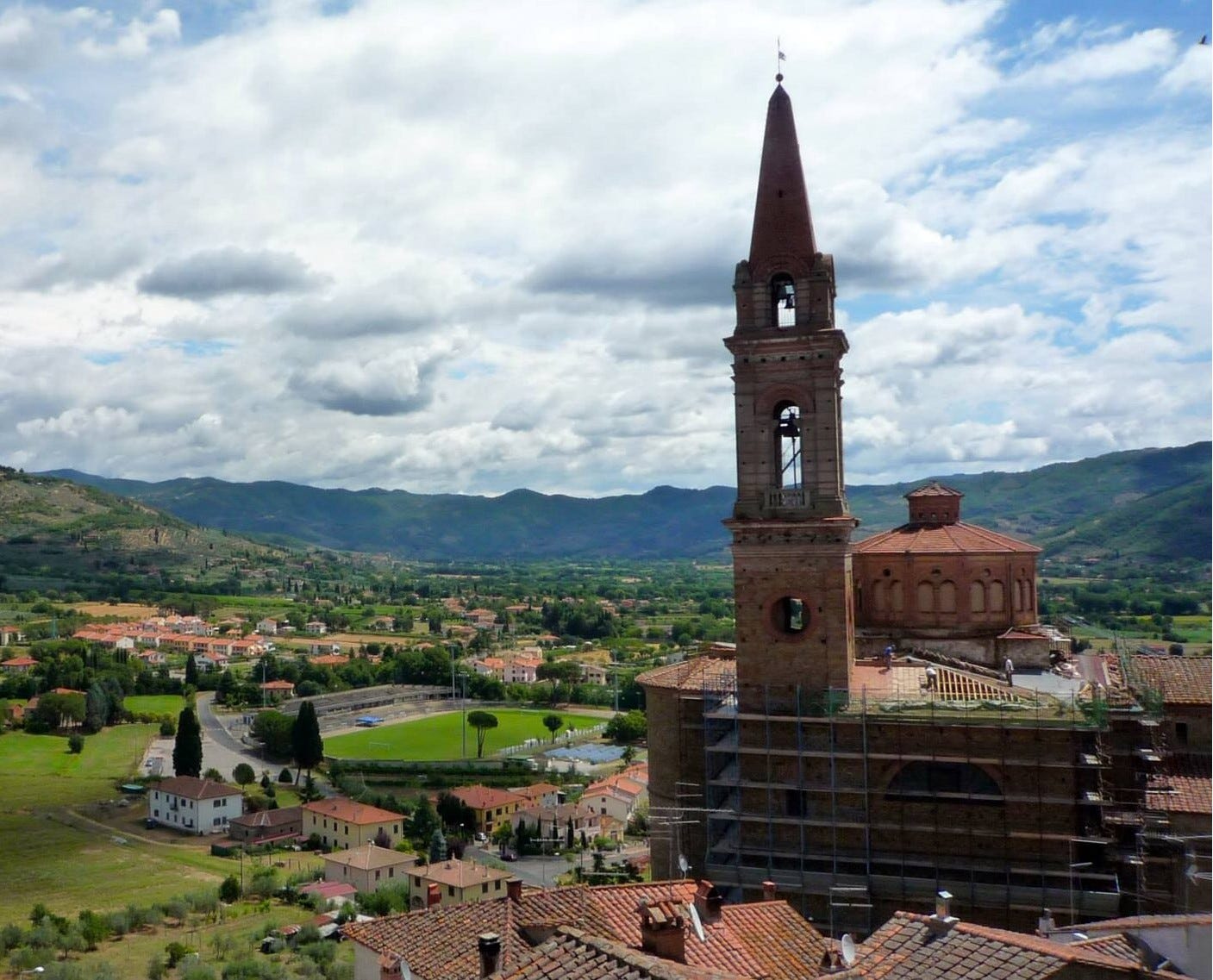From citizenship to membership
The Democracy Policy Network's new cookbook for learning to love your place by belonging to it

An old joke about the slightly fanatical devotion Italians have for their cities is about a guy planning to buy Italian postage stamps. His friend says, “You’re going to buy stamps in Florence?”, looking askance at the idea. He then advises, “No, no—you should buy stamps in my city, Milan. Much better stamps.”
Citizenship as something much more than voting, as an existential sense of membership is an old and powerful idea in many European places but is much weaker, as we know, in the U.S., despite the eloquent urgings of Wendell Berry over thirty years ago. (His “Health Is Membership talk can be found here.)
The once-famous American talent for associational life, so striking to Alexis de Tocqueville back during Andrew Jackson’s administration, has waxed and waned over the decades, lapsing again into decline over the last few decades. (As noted in, for example, Robert Putnam’s Bowling Alone, surely one of the few social science texts which has inspired an entertaining doc film.)
Membership is an attachment that seems to arise organically, almost spontaneously, when conditions are right. It is not a concept easily translatable into practical proposals, as we’ve learned from the failure of all those “red/blue” gatherings which did not actually bridge many divides.
Mindful of these challenges to rebuilding our nearly collapsed civic life, two very talented thinker-activists have just published “City Membership”, a highly readable whitepaper/toolkit offering a mix of policy elements, notable precedents, and strategy advice.
Authors Sam Pressler and Pete Davis argue for rebuilding our communities first from the municipal level, given that it’s pretty much only at that level that we still have some freedom to exercise genuine innovation and practice an authentic politics.
Here are some of my favorite recipes for their campaign to reground us in our own places:
Mayors should expand accessible meeting spaces and launch a unified space reservation system. This is a modest-sounding proposal to recognize our damaging lack of “third places” where local bonds can develop and even real politics can emerge.
Cities should collaborate with civic groups to create citizens’ assemblies in which randomly selected (i.e., jury style) groups of citizens deliberate and advise on local issues. This also is a big idea in quiet language!
Cities can also build up membership in its neighborhoods by creating more microspaces for organic events and meetups, along with microgrant funding.
The authors push for a much bigger commitment to welcoming new residents, via a “welcoming liaisons” program, a genuinely valuable and practical “welcome kits”, and new resident orientation sessions.
Civic “homecomings” encourage former residents (including whatever now-“famous” people that might include) are another piece of the authors’ proposed civic ecosystem, somewhat modeled on college homecomings.
If thoughtfully done, a city “hall of fame” is a way of publicizing a city’s values by raising up authentic local heroes (i.e., not just boosters or the usual business crowd) as a shared point of pride, somewhat on the model of the National Baseball Hall of Fame.
Most of these proposals, the document notes, have precedents—the Boston Office of Civic Organizing, various towns’ “Old Home Weeks,” the Falls Church (VA) Community Ambassadors program.
To follow the authors’ ongoing work in this vital area, subscribe to Sam’s Collective Tissue Substack and follow the Democracy Policy Network.
See you next time—peace.





Excellent post—actionable for elected officials. Communal civic spaces are so important for creating a sense of belonging and strengthening civic spirit and capacity. When people don’t have those things, they are disconnected, are disenfranchised from decision-making (I see this particularly with public schools where parents have no power or voice, except when the real topic— the quality of a young persons educational experience — spills into culture wars issues) and lose hope.
Re: welcoming people. I remember the Welcome Wagon women from growing up—every time someone moved into town, they got a call from a woman who came over with a lovely welcome, a bit of conversation and a welcome basket. The caveat is that our town was almost 100 percent white—I’m wondering how this would have been different in a multiracial community—though I bet I know the answer.
In our community many of the newcomers are Hispanic, so are not openly welcomed (at least by the White community) for many reasons—language, class, politics. Having said that, there ARE places they are welcomed and can get some services and food.
I wasn't aware of these strategies by the Democracy Policy Network to make citizenship “something much more than voting, as an existential sense of membership.” It’s fascinating. This sense of citizenship as meaningful civic belonging, I think, would help us understand Paul’s remark about citizenship—and the Philippians' evident concern about their citizenship (or lack of citizenship) in Ancient Rome.